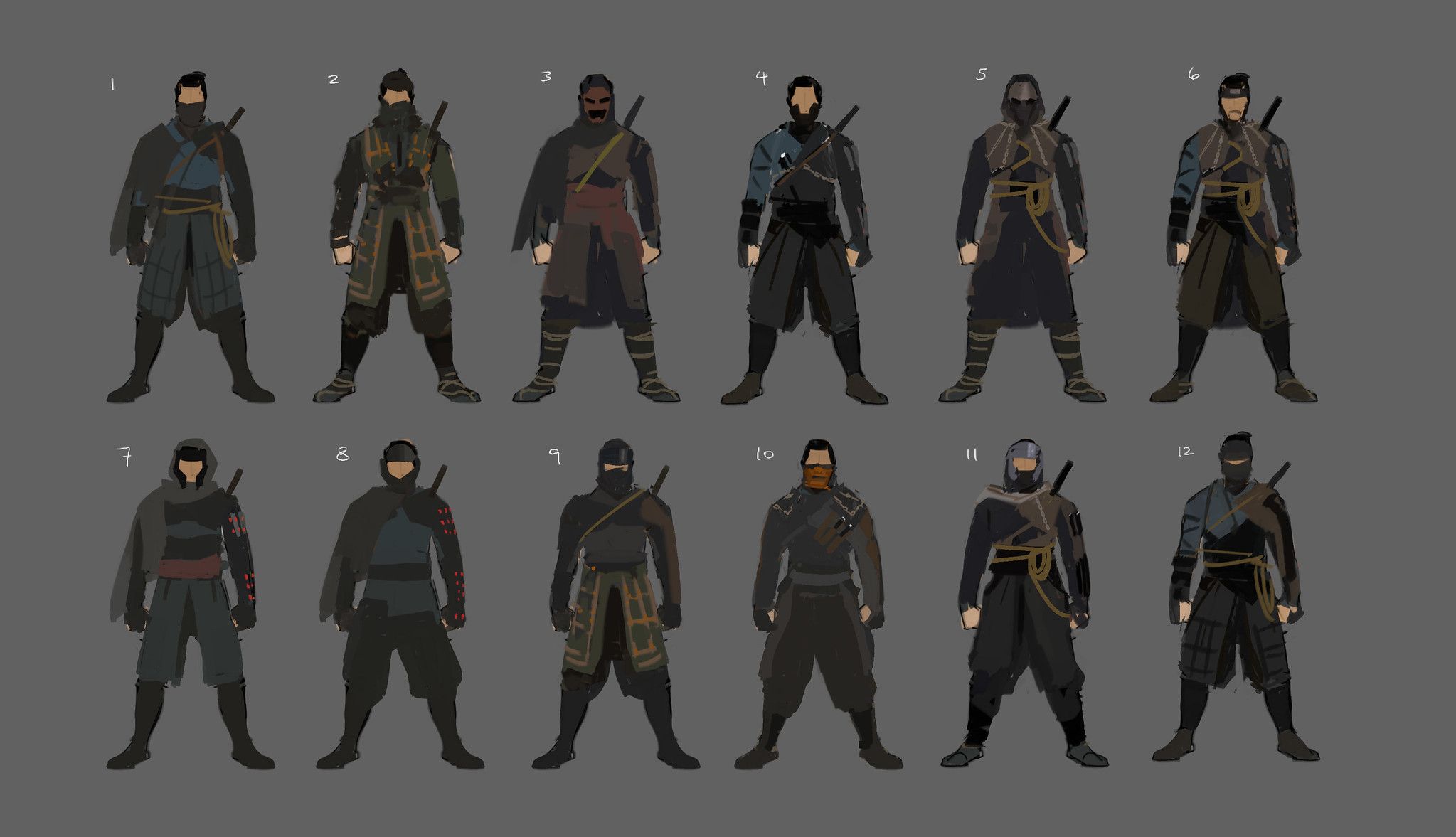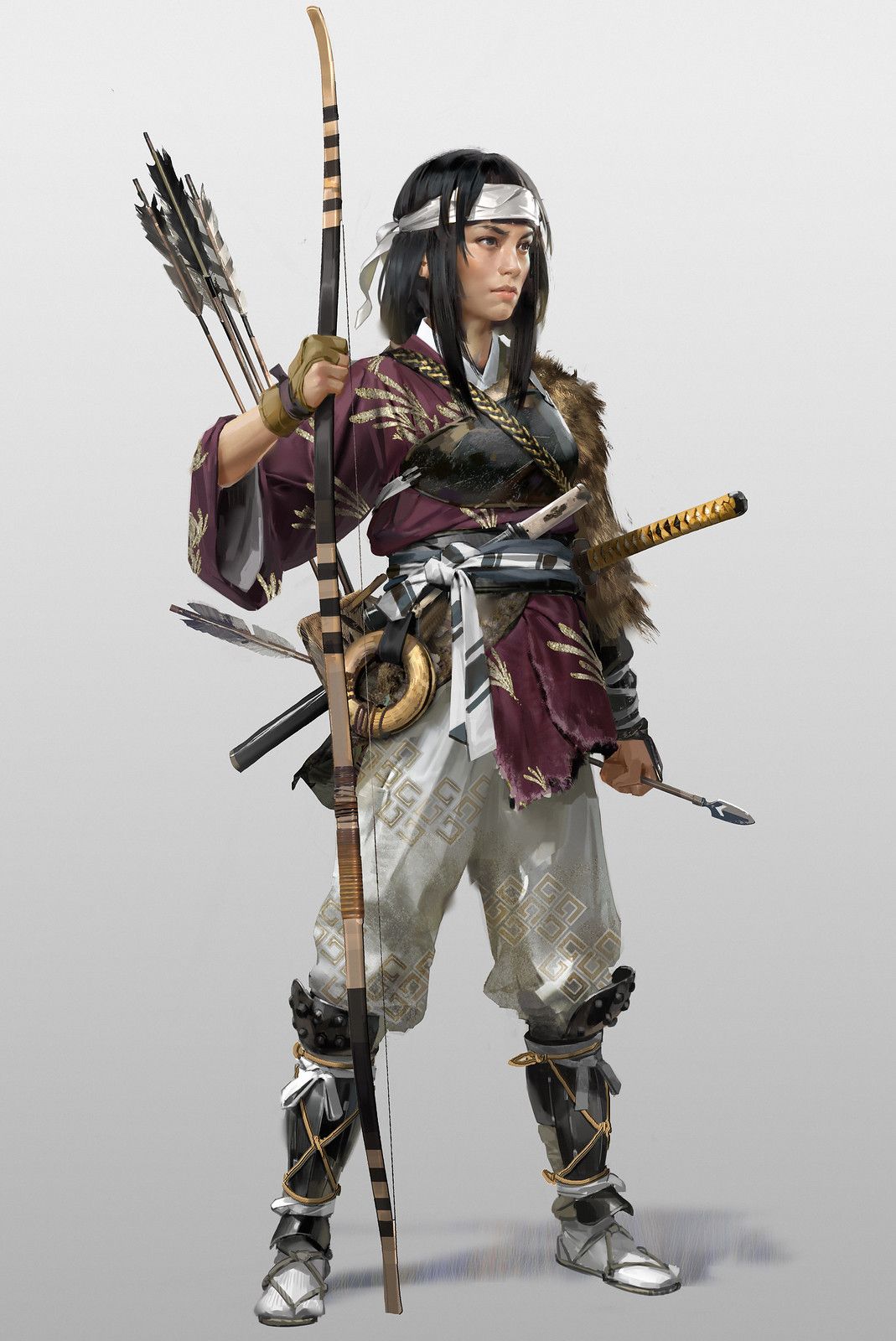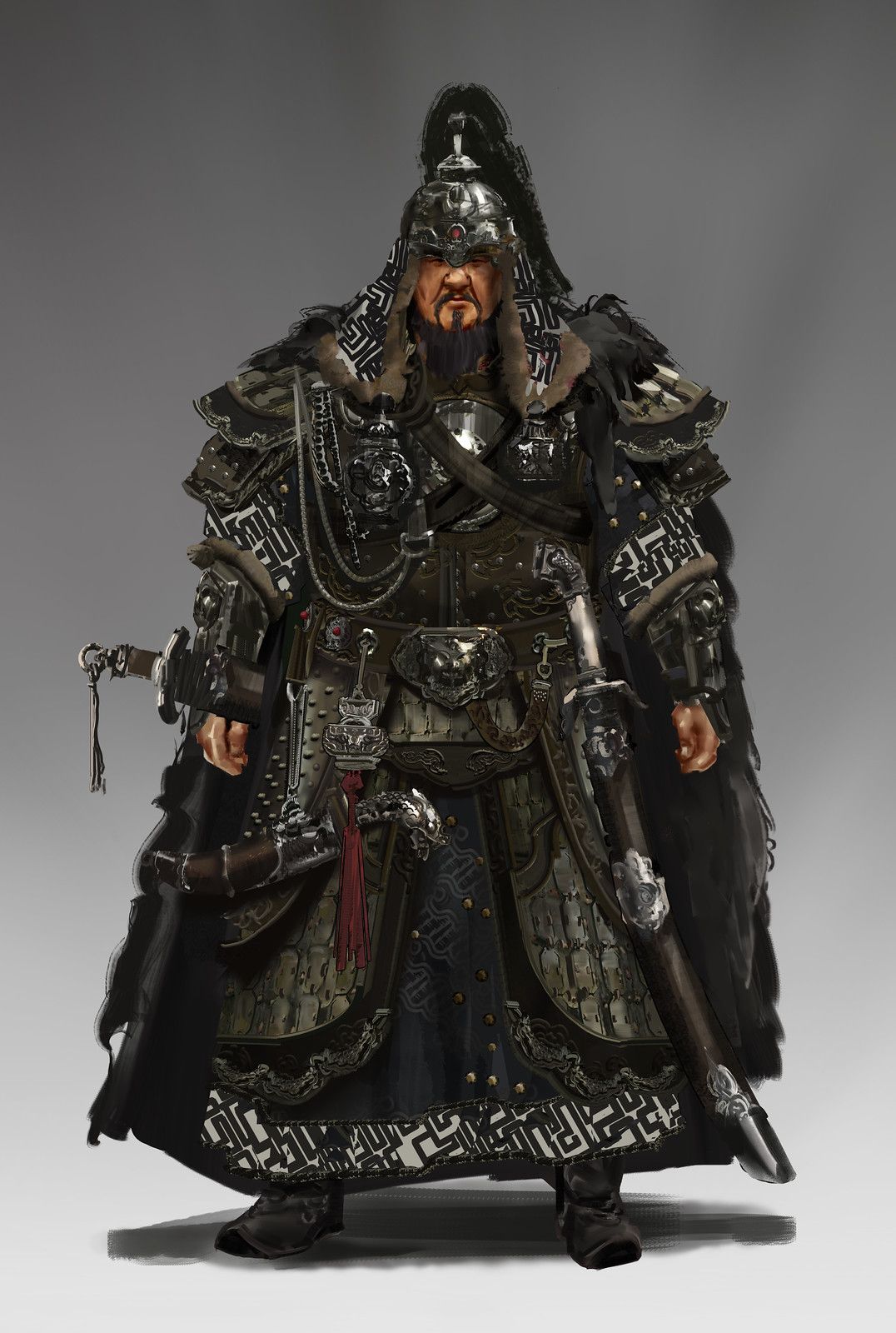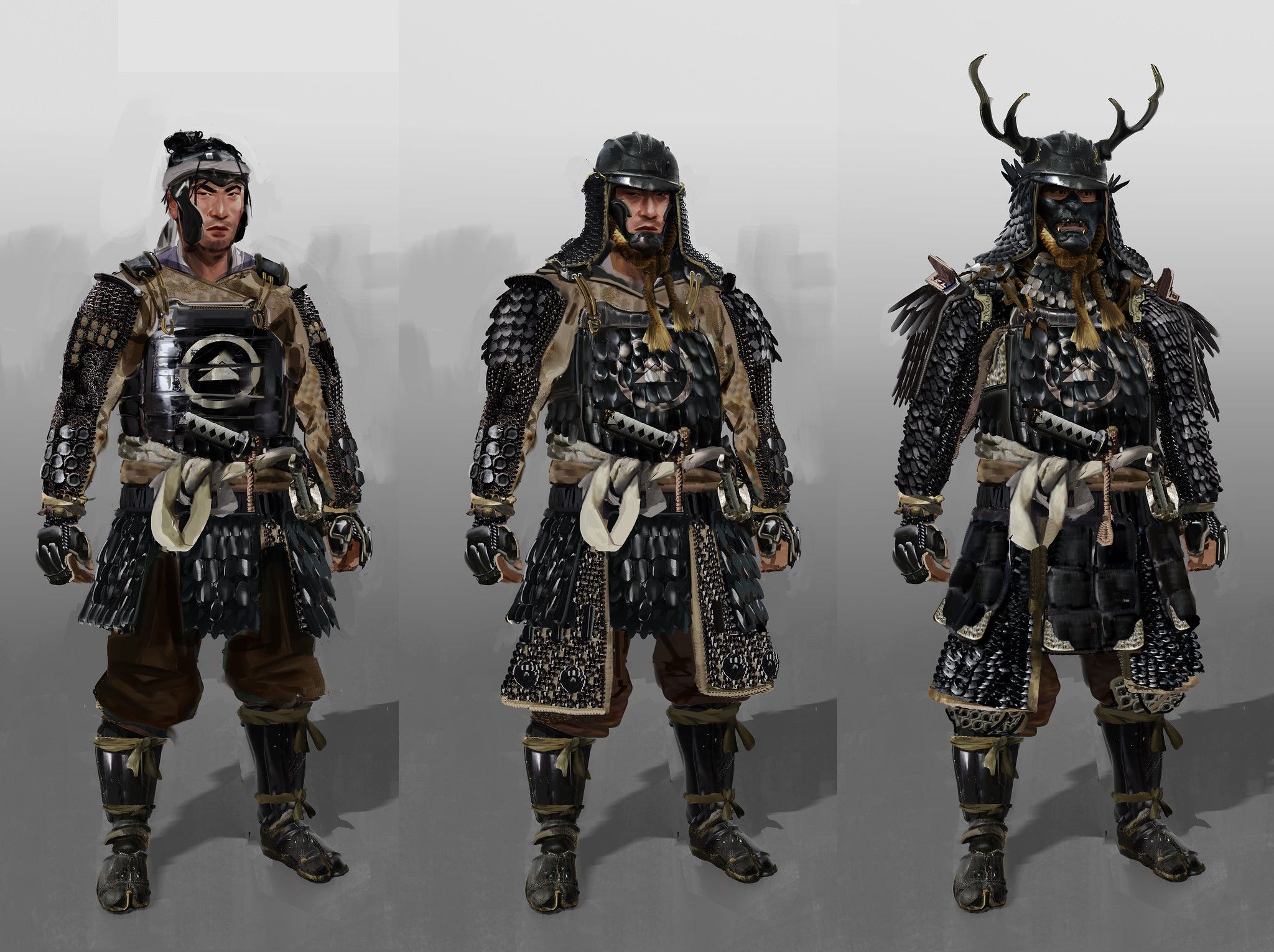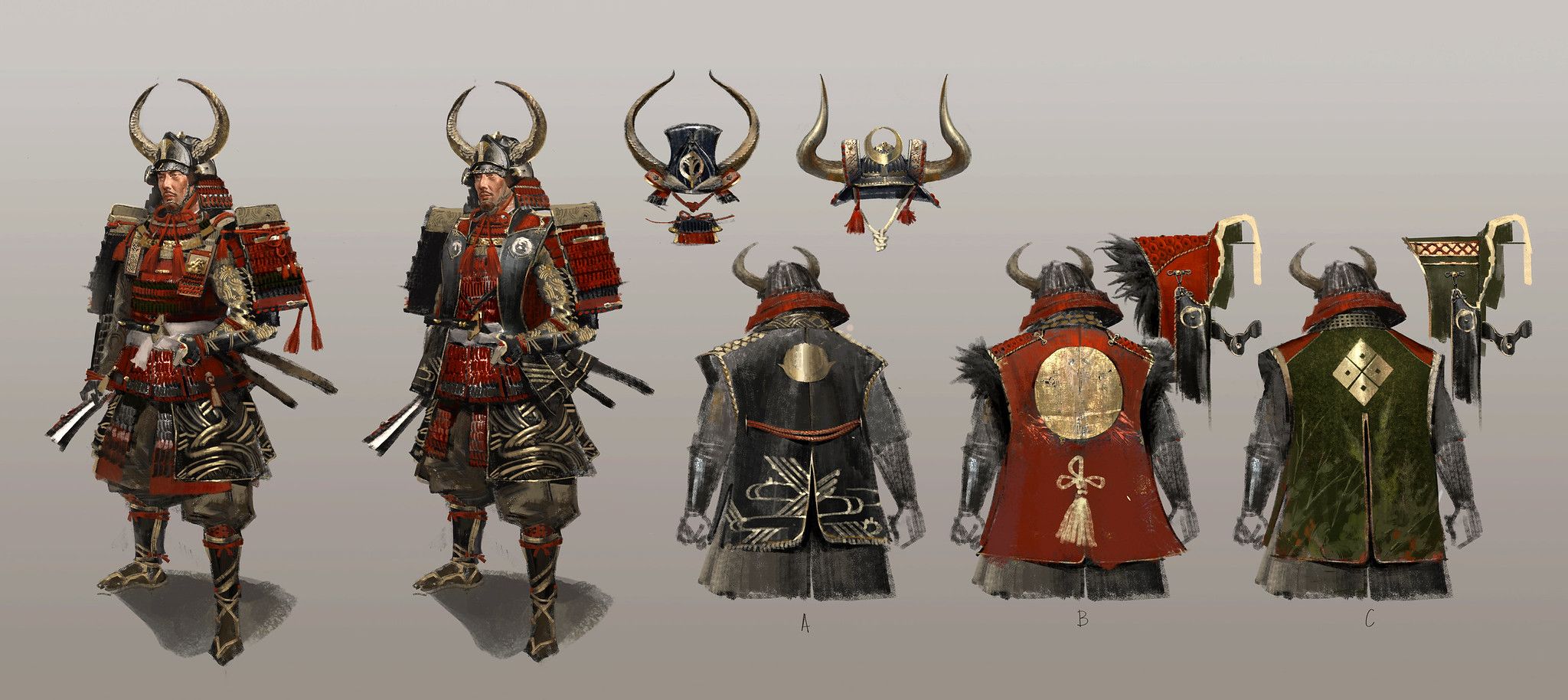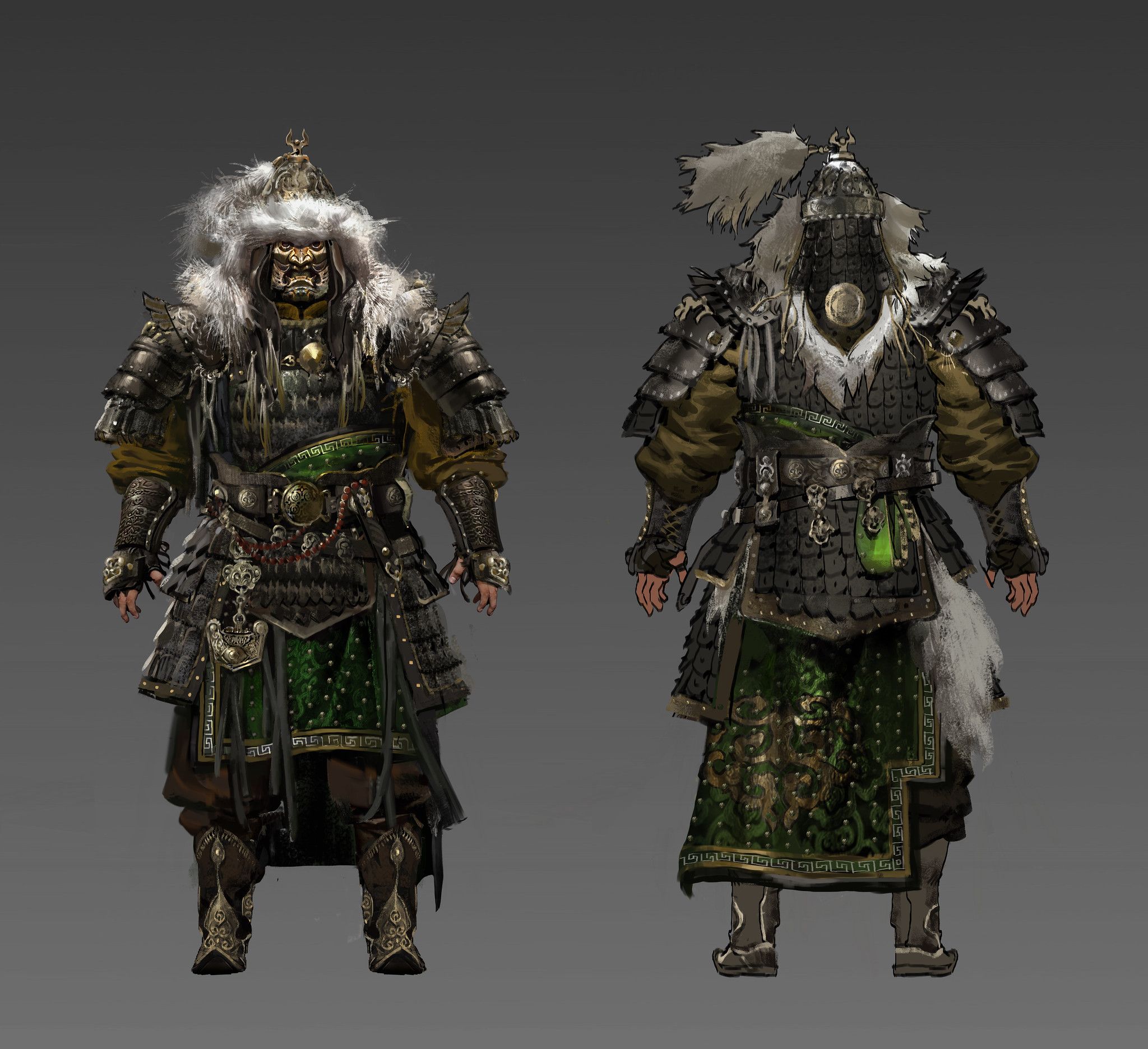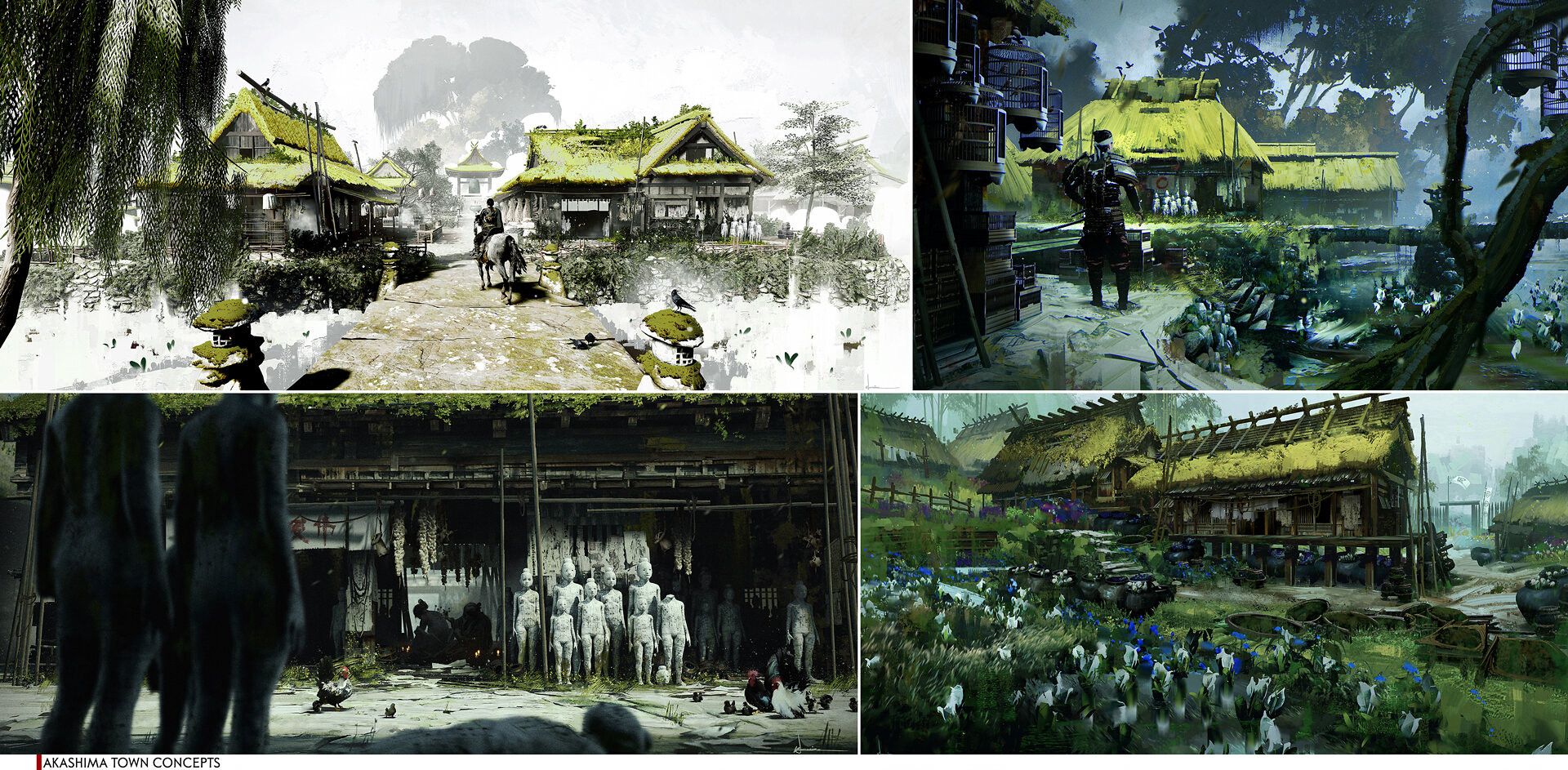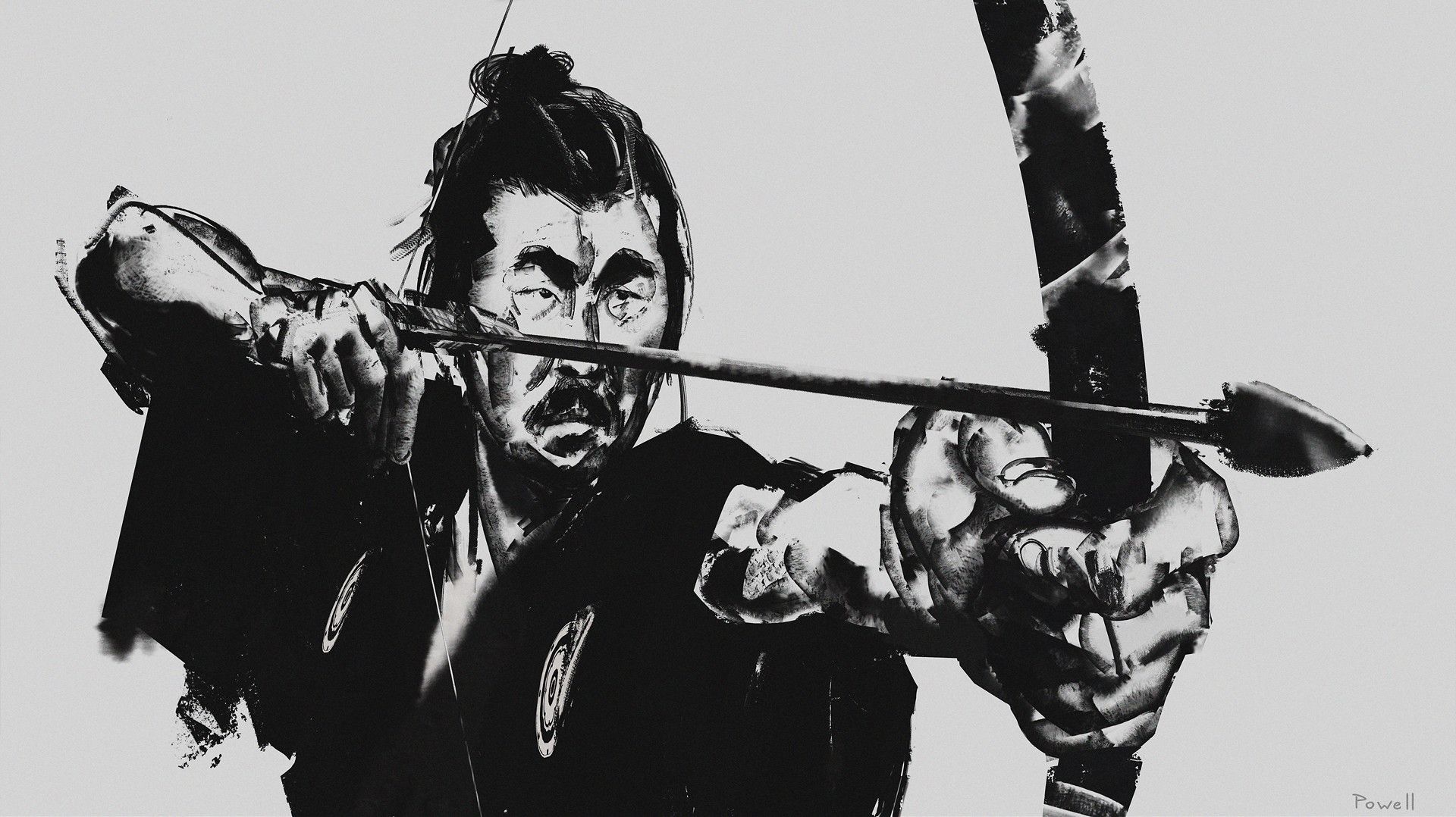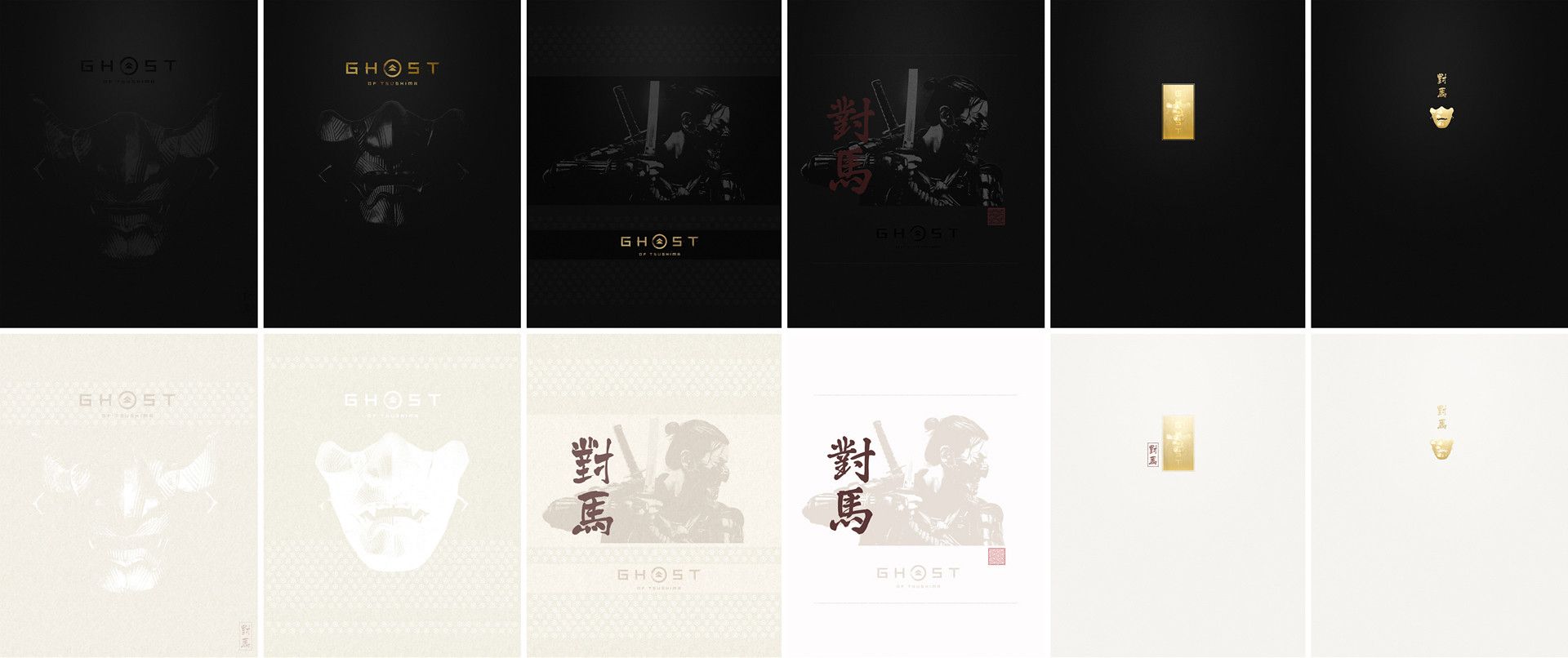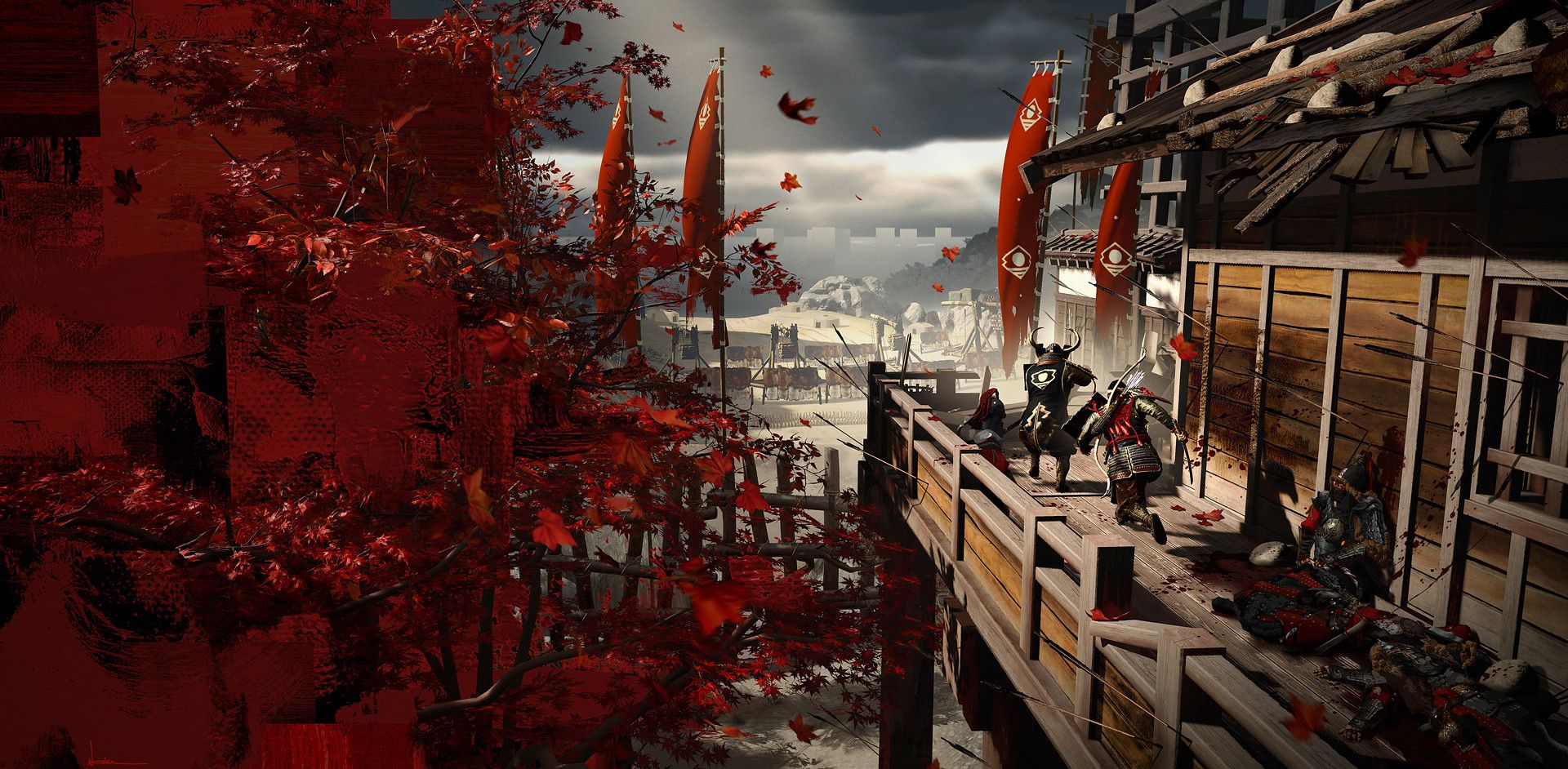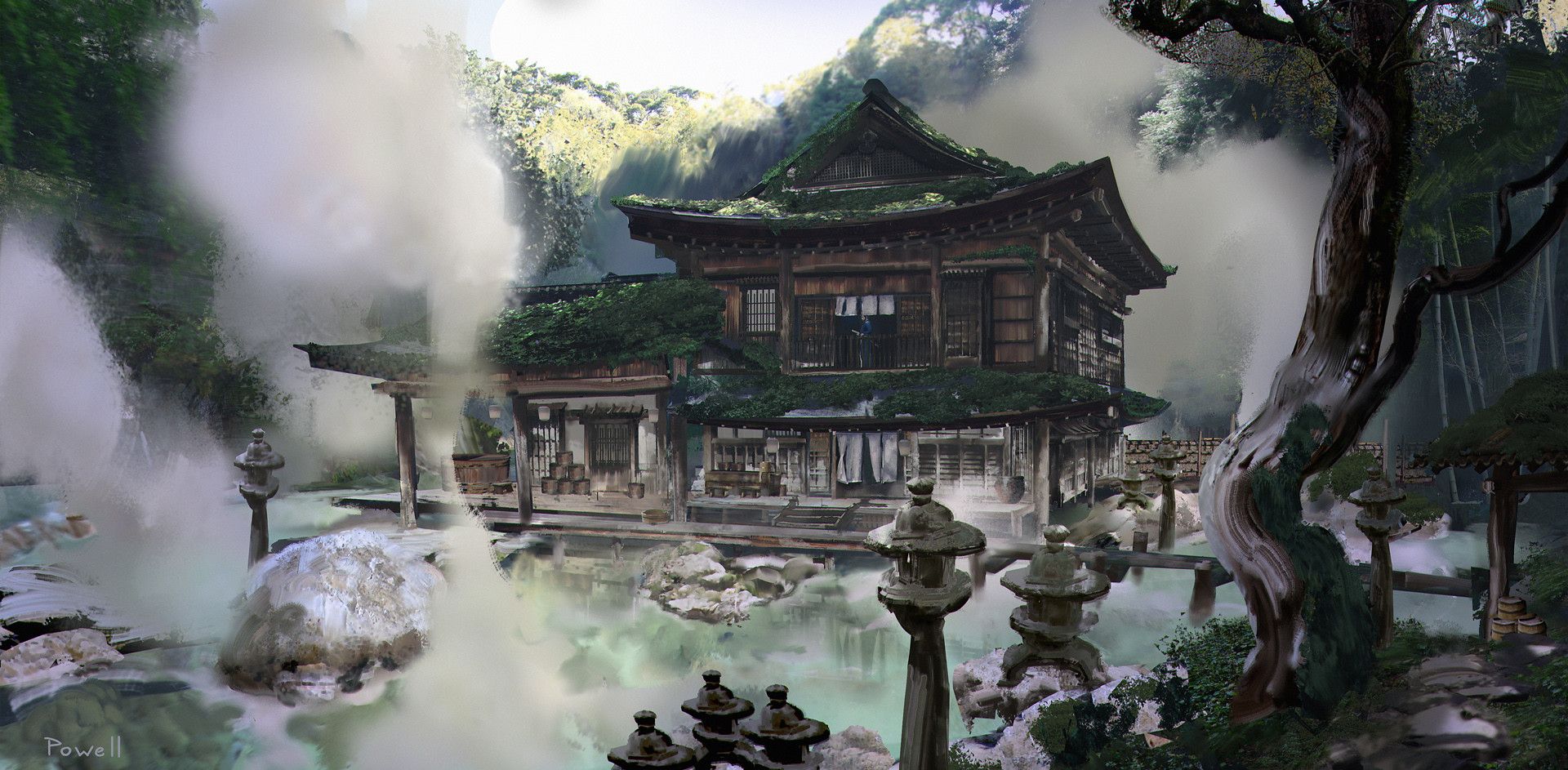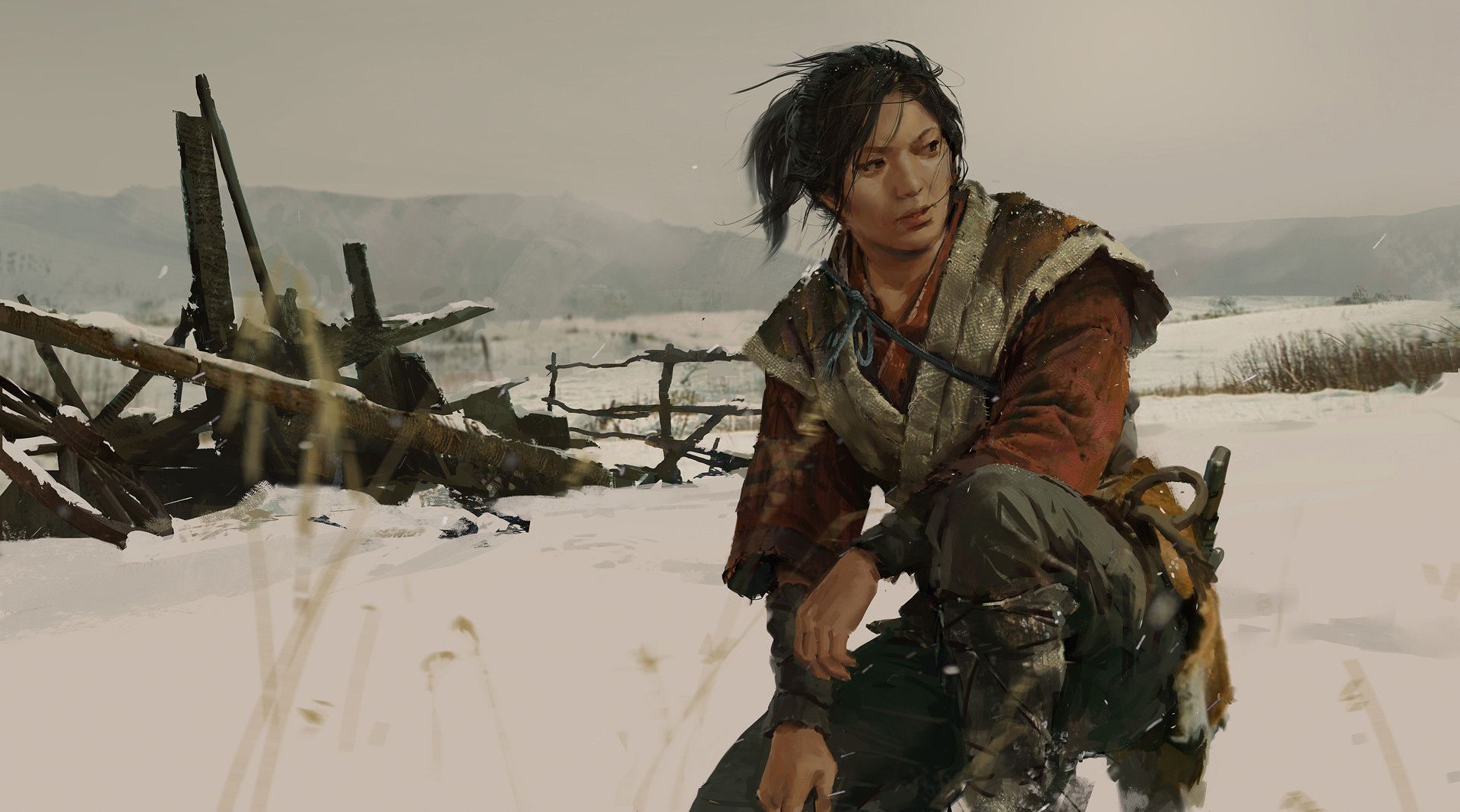If you've had the chance to dive into Sucker Punch's Ghost of Tsushima since its release in July, you probably had your mind blown by the incredibly lush and vast environments that greeted you straight off the bat. In my opinion, it is most certainly one of the best looking games that is on the PS4, and just by taking a stroll around the island of Tsushima will cement that. Whether you played the game in the vibrant color pallet or the stark black and white cinematic mode, Ghost of Tsushima is a vision of beauty everywhere you glance so, it's of no surprise to see the number of artistic endeavors that went into the concept art of the game. The game's lead concept artist Ian Jun Wei Chiew unearths the art behind the game to fans, and how the team at Sucker Punch realized some of these concepts in-game.
In a long and detailed posting on PlayStation's Blog, Ian Jun Wei Chiew discusses the process of what went into mastering the concept art for Ghost of Tsushima, which includes insights centered around building the characters faces, early drawing boards for Jin and his many outfits, Khotun Khan & His Army, environments, and aesthetics. Chiew starts off by delving into the aspects of the characters of the game saying "We spent a lot of time gathering reference material for our characters, which ranged from Samurai films, online books and resources, to photographing museum exhibits, from the most intricate Samurai and lavish armor, down to poor and rough bandits." Chiew continues "Usually, the concepts for characters are done well before the actors are cast. We try to invoke a personality fit for the character on the face as well as provide references for the general tone the character should give off. This helps with finding and casting the actors later."
According to Chiew's Blog, Jin's gear specifically was designed with armor from both the Kamakura period and the Haien period. "Knowing that we wanted a character to have to let go of tradition and evolve into something out of necessity gave us this opportunity to tell a fictional story of a new kind of warrior. We avoided going the route of your traditional assassin trope with the iconic black and fully cloth-based outfit, and instead incorporated a touch of samurai armor elements in the Ghost outfit to help add a sense of realism." Chiew further elaborates on Jin’s arc and how they wanted to portray him by using "subtle intricate patterns as well as traditional armor plating pieces to make the Ghost outfit look more believable for that time."
The blog opens up about The Khan's two outfits and how one has a more traditional color palette with organic patterning and aesthetics, and the other, which is more armored, is void of color, with more angular patterns that feel oppressive. Talking about The Mongolian army, Chiew says that they were aware enough to want to make the five tribes different from each other as they are spread across the islands and gameplay acts. "The more powerful the tribe, the more armored and fur-laden they are. This is to show enemy scaling as you play through the game, as well as to consider the cold temperatures of the snowy area of Kamiagata as you get closer to the end of the game." Chiew states "Within those ranks are several classes, each with a unique general silhouette that players can hopefully distinguish from a distance, such as the archer having a more triangular silhouettes, while the brutes had more of a bulky rectangular shape."
Chiew begins to round up the blog by touching on the game's environmental beauty, finding the right balance for accuracy, and the importance of research. "We always had to think about what to keep historically accurate, and when to break away. ‘Realistic’ is not a word we like using here, our goal was to make sure the game had a sense of style, even though we were making a historical epic. We wanted to create a world that feels like 1274 Japan, but at the same time be more expressive with it." said Chiew "We did a lot of research when it comes to the architecture of the game, from farmsteads, towns and castles to shrines and temples. A lot of the references available online are from later periods and there are not a lot of details on the Kamakura era, which made it a little tricky."
Ending the blog, Chiew says that they knew they wanted a "more modern and classic aesthetic compared to keeping things purely traditional." Unsurprisingly, old samurai movie posters, modern and traditional graphic design and packaging were key inspirations when concepting early mockups. "We incorporated this look into our UI, logos, 2D cutscenes, and even our merchandise and marketing materials." If you fancy jumping into more details surrounding the concept art process and a boatload more art images, you can check that all out, right here.
The PlayStation 5 releases in just a few short weeks and Ghost of Tsushima will be playable on the next-gen console at launch. Sucker Punch recently announced on Twitter that GoT will be able to run with “frame rates up to 60FPS” in addition to having shorter loading times and allow users to transfer their saves from PS4 to PS5. If you want to purchase the game through Amazon, you can do so here. and if you need another opinion then read our very favorable review here. You can also check out this editorial on the five Samurai movies to watch before you play the game for yourself.


